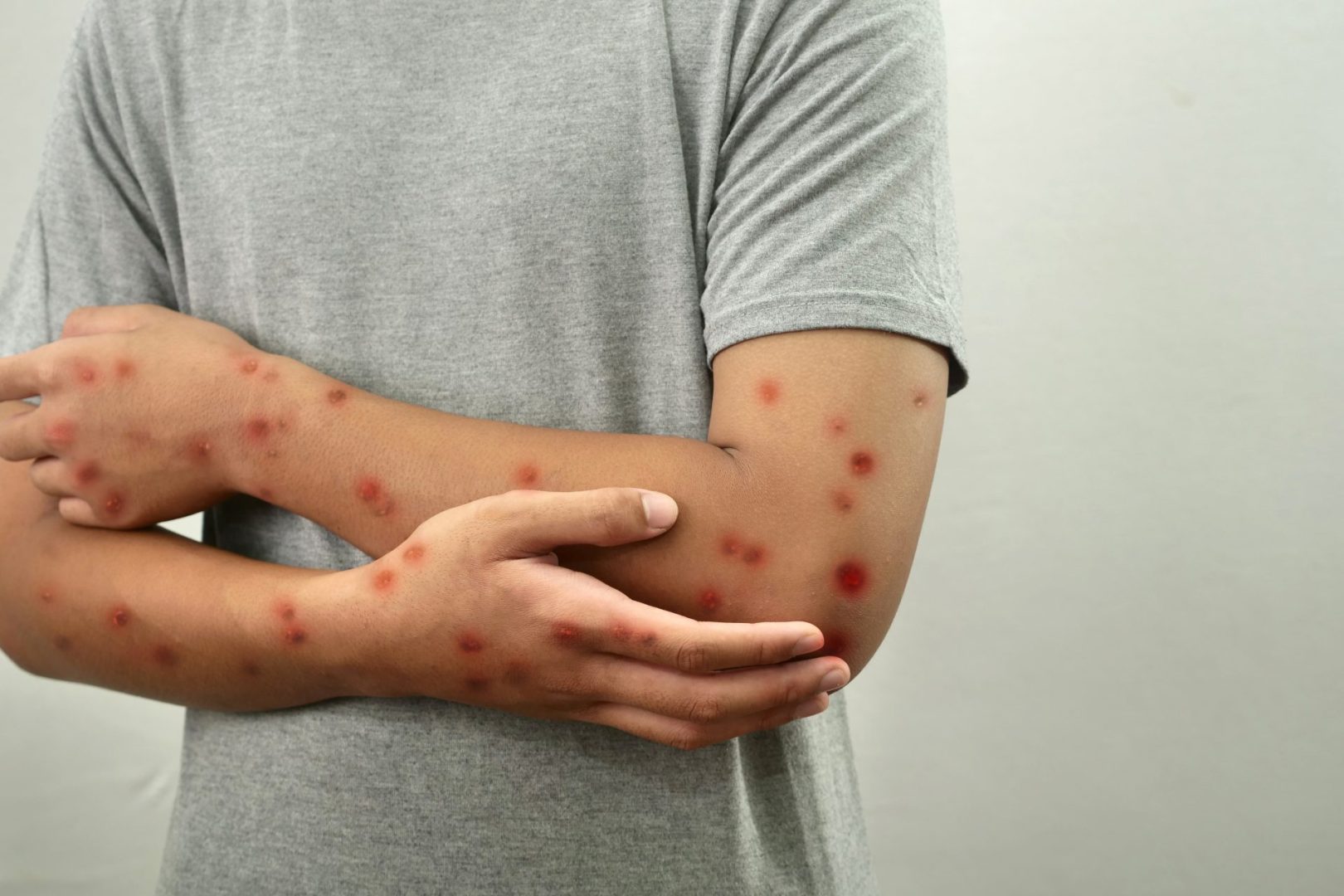Mpox, previously known as monkeypox, is a viral infection that has been making headlines for all the wrong reasons due to its painful symptoms and potential for serious complications. While many people think of it as a rare disease that only affects certain populations, the reality is that anyone can contract mpox, and understanding the warning signs could be crucial for your health and safety.
This viral infection is characterized by painful rashes that can cover large portions of your body, along with fever and swollen lymph nodes that can make you feel absolutely miserable for weeks. The infection spreads through physical contact with infected individuals, respiratory droplets, or contaminated objects, making it more contagious than many people realize.
What makes mpox particularly concerning is that symptoms can take weeks to appear after exposure, meaning you could be unknowingly spreading the virus to family members, friends, or coworkers before you even realize you’re infected. Understanding how to recognize, prevent, and respond to mpox could protect not just your health, but the health of everyone around you.
Two different types create very different health outcomes
Mpox isn’t just one disease, it comes in two distinct varieties that differ dramatically in their severity and geographical distribution. Understanding which type you might be dealing with can help you understand your risk level and what to expect if you become infected.
Clade 1 is the more severe form that primarily appears in Central African countries like Gabon and the Democratic Republic of the Congo. This variant has a mortality rate of up to 3.3% in recent outbreaks, making it significantly more dangerous than its cousin. If you’ve traveled to or have connections with Central Africa, this is the variant that should concern you most.
Clade 2 is the less severe variant commonly found in West African nations like Sierra Leone, Nigeria, and Ghana, with a mortality rate of less than 0.1%. This is the type responsible for the global mpox outbreak that began in 2022 and spread to countries around the world. While less deadly, it can still cause weeks of painful symptoms.
The geographical distribution of these variants means that your travel history and potential exposure sources can help healthcare providers understand which type you might have contracted and what kind of treatment approach might be most appropriate for your situation.
The telltale rash starts on your face and spreads everywhere
The most recognizable and disturbing symptom of mpox is a distinctive rash that typically begins on your face and then spreads to other parts of your body with a pattern that’s hard to mistake for anything else. This isn’t just a mild skin irritation, it’s a painful, disfiguring rash that can cover your hands, feet, genitals, and other sensitive areas.
The rash consists of firm, rubbery sores that may become umbilicated, meaning they develop a characteristic dented appearance as the disease progresses. These sores are not only painful but can also be deeply uncomfortable and embarrassing, especially when they appear on visible areas of your body.
What makes this rash particularly problematic is that it can last for weeks, going through different stages of development that include fluid-filled blisters, pustules, and eventually scabs that can leave permanent scarring. The appearance and progression of this rash is often what prompts people to seek medical attention.
The distribution pattern of the rash, starting on the face and spreading outward, is one of the key diagnostic features that healthcare providers use to distinguish mpox from other viral infections that might cause similar skin symptoms.
Fever and body-wide symptoms make you feel terrible
Beyond the obvious rash, mpox causes a constellation of symptoms that can make you feel absolutely awful for extended periods. Fever and chills are common early symptoms that can persist throughout the infection, leaving you feeling weak and miserable.
Swollen lymph nodes are another hallmark of mpox that distinguishes it from some other viral infections. These swollen glands can be painful and may appear in multiple locations throughout your body, including your neck, armpits, and groin areas.
Fatigue becomes overwhelming during mpox infection, often leaving people unable to work or carry out normal daily activities for weeks. This isn’t just feeling a little tired, it’s the kind of exhaustion that makes getting out of bed feel like climbing a mountain.
Additional symptoms include severe headaches and muscle pain that can affect your entire body, along with sore throat, nasal congestion, and coughing that can make you feel like you have the worst flu of your life. These respiratory symptoms also increase the risk of spreading the virus to others through droplets.
Transmission happens through more routes than you think
Mpox spreads through direct contact with the virus, but this can happen in more ways than most people realize, making prevention more challenging than simply avoiding obviously sick people. Understanding all the transmission routes is crucial for protecting yourself and others.
Skin-to-skin contact with an infected person is the most obvious transmission route, but this includes not just intimate contact but also things like hugging, shaking hands, or any direct contact with infected skin lesions. The virus can survive on skin and in body fluids for extended periods.
Exposure to contaminated objects and surfaces is another significant transmission route that many people overlook. The virus can survive on clothing, bedding, towels, and other personal items for days or even weeks, making it possible to contract mpox from objects that were used by infected individuals.
Respiratory droplets can spread the virus when infected individuals cough, sneeze, or talk, especially in close quarters or poorly ventilated spaces. This airborne transmission route means that even brief exposure to infected individuals could potentially result in infection.
Transmission from infected mothers to their children during pregnancy represents another concerning route that can affect the most vulnerable populations and result in serious complications for both mother and baby.
Certain groups face much higher risks of severe illness
While anyone can contract mpox, certain populations are at significantly higher risk of developing severe, life-threatening complications that require immediate medical attention and aggressive treatment approaches.
Children are particularly vulnerable to severe mpox infections because their immune systems are still developing and may not be able to mount effective responses against the virus. Pediatric cases often require hospitalization and intensive supportive care.
Pregnant individuals face risks not only to their own health but also to their developing babies, with potential complications including miscarriage, stillbirth, or transmission of the virus to the newborn. Pregnancy-related immune system changes can also make the infection more severe.
People with weakened immune systems, including those undergoing cancer treatment, organ transplant recipients, or individuals living with HIV, are at extreme risk for severe complications and prolonged illness that may not resolve without aggressive medical intervention.
These high-risk populations need to be especially vigilant about prevention measures and should seek immediate medical attention if they suspect exposure or develop any symptoms consistent with mpox infection.
Prevention and early action can protect you and others
The JYNNEOS vaccine provides excellent protection against mpox and is administered in two doses given four weeks apart. This vaccine is reported to be up to 95% effective at preventing infection, making vaccination the most reliable protection available.
If you suspect you have mpox, immediate isolation is crucial to prevent spreading the virus to family members, friends, coworkers, and community members. This means staying in a well-ventilated room, avoiding shared spaces, and minimizing contact with others until you can be properly evaluated.
Basic hygiene measures become critically important during potential exposure periods. Frequent handwashing, avoiding shared objects like towels and utensils, wearing masks in shared spaces, and covering any skin lesions can significantly reduce transmission risk.
Early medical evaluation is essential if you develop symptoms or have known exposure to mpox. Healthcare providers can perform PCR testing to confirm diagnosis, usually with results available within two to four days, and can provide guidance on isolation procedures and symptom management.
While there are no specific antiviral treatments for mpox, supportive care including pain management, topical treatments for rashes, and prescription medications for complications can significantly improve comfort and outcomes during the infection period.

















